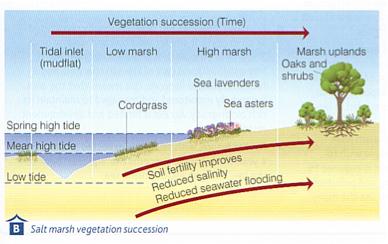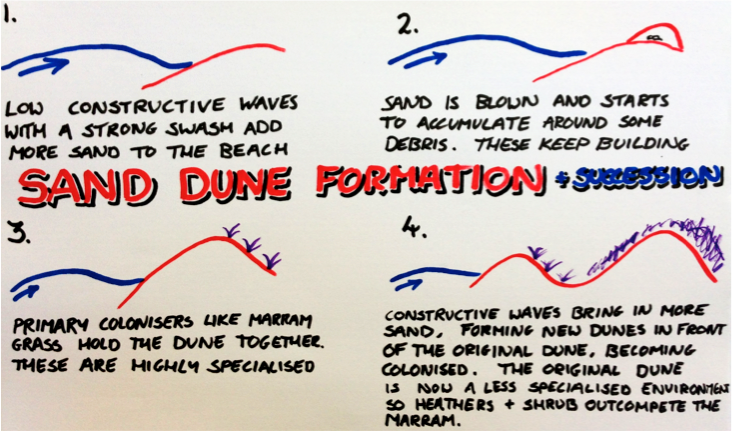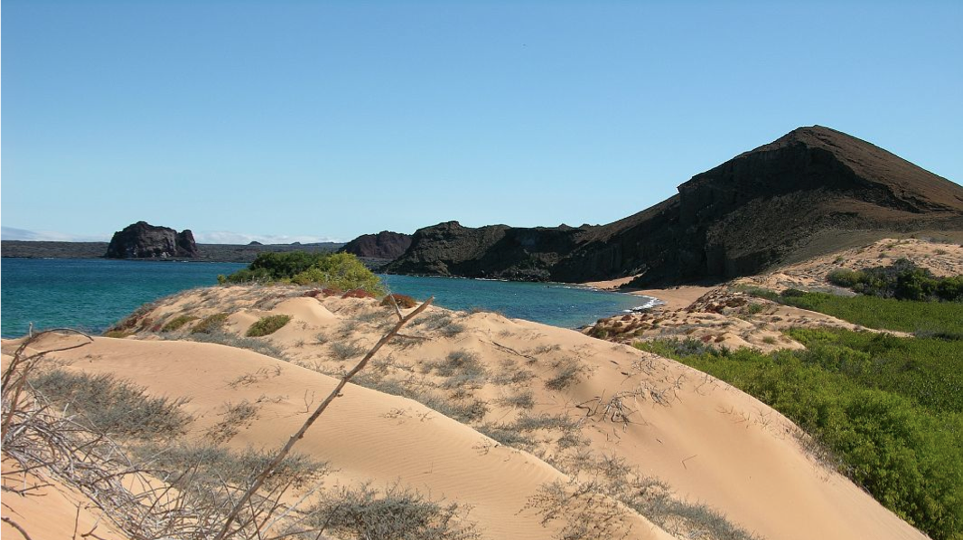Sand Dunes
Formation of Sand Dunes
Many depositional features consist of sand and shingle and are therefore loose and unstable and easily eroded and transported.
Sand dunes are made of wind blown sand and are stabilised by a process called Plant Succession. Long low waves which roll onto the beach. A strong swash deposits beach material which forms a long, flat beach. These type of wave usually form when there is a short fetch
Succession
- Bare ground is gradually colonised by plants called pioneer species.
- Pioneer species modify the environment by binding sand or mud with their roots and add nutrient when they die and decay.
- Creeping plants, with leaves, help keep moisture in the sand/mud. These changes allow other species to colonise.
- The new invaders modify the environment by providing shade and improve the soil.
- As the environment changes, different species colonise until it becomes stable.
- The final community to colonise is the climatic climax community (trees)
Salt Marshes are areas of flat, silty sediments that accumulate around estuaries or lagoons. 
They develop:
- In sheltered areas where deposition occurs
- Where salt and fresh water meets
- Where there are no strong tides or currents to prevent deposition or accumulation
Some of plants are Halophytes – plants that can tolerate saline (salty) conditions.
As mud flats develop, salt tolerate plants (such as eelgrass) begin to colonise and stabilise them.
Halophytes such as cordgrass, help slow down tidal flow and trap more mud and silt.
As sediment accumulates, the surface becomes drier and different plants colonise e.g. sea asters.
Creeks (created by water flowing across the estuary At low tide) divide up the slat marshes.


